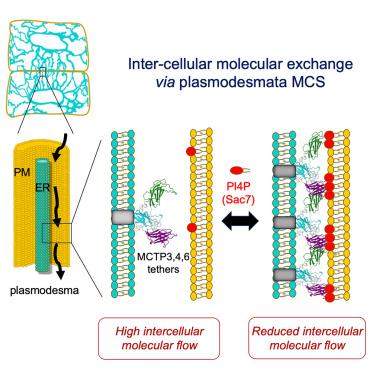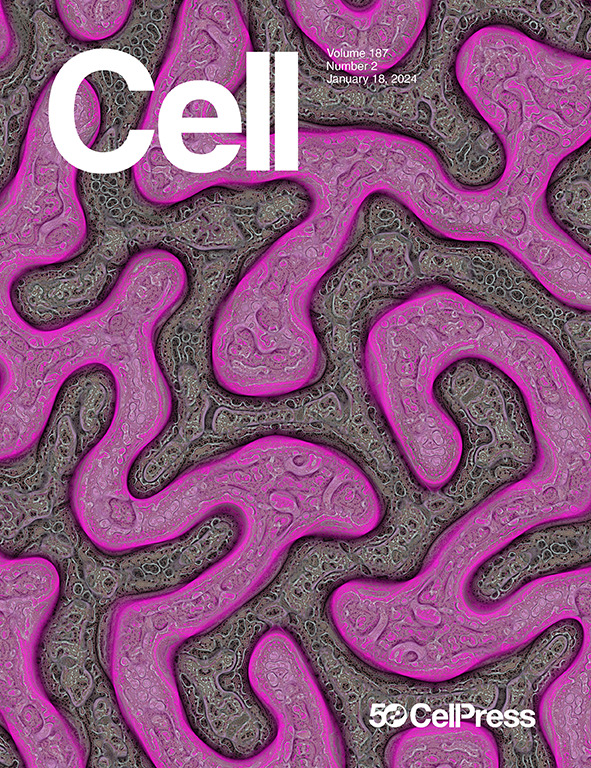Plasmodesmata act as unconventional membrane contact sites regulating intercellular molecular exchange in plants
IF 45.5
1区 生物学
Q1 BIOCHEMISTRY & MOLECULAR BIOLOGY
引用次数: 0
Abstract
Membrane contact sites (MCSs) are fundamental for intracellular communication, but their role in intercellular communication remains unexplored. We show that in plants, plasmodesmata communication bridges function as atypical endoplasmic reticulum (ER)-plasma membrane (PM) tubular MCSs, operating at cell-cell interfaces. Similar to other MCSs, ER-PM apposition is controlled by a protein-lipid tethering complex, but uniquely, this serves intercellular communication. Combining high-resolution microscopy, molecular dynamics, and pharmacological and genetic approaches, we show that cell-cell trafficking is modulated through the combined action of multiple C2 domains transmembrane domain proteins (MCTPs) 3, 4, and 6 ER-PM tethers and phosphatidylinositol-4-phosphate (PI4P) lipid. Graded PI4P amounts regulate MCTP docking to the PM, their plasmodesmata localization, and cell-cell permeability. SAC7, an ER-localized PI4P-phosphatase, regulates MCTP4 accumulation at plasmodesmata and modulates cell-cell trafficking capacity in a cell-type-specific manner. Our findings expand MCS functions in information transmission from intracellular to intercellular cellular activities.

求助全文
约1分钟内获得全文
求助全文
来源期刊

Cell
生物-生化与分子生物学
CiteScore
110.00
自引率
0.80%
发文量
396
审稿时长
2 months
期刊介绍:
Cells is an international, peer-reviewed, open access journal that focuses on cell biology, molecular biology, and biophysics. It is affiliated with several societies, including the Spanish Society for Biochemistry and Molecular Biology (SEBBM), Nordic Autophagy Society (NAS), Spanish Society of Hematology and Hemotherapy (SEHH), and Society for Regenerative Medicine (Russian Federation) (RPO).
The journal publishes research findings of significant importance in various areas of experimental biology, such as cell biology, molecular biology, neuroscience, immunology, virology, microbiology, cancer, human genetics, systems biology, signaling, and disease mechanisms and therapeutics. The primary criterion for considering papers is whether the results contribute to significant conceptual advances or raise thought-provoking questions and hypotheses related to interesting and important biological inquiries.
In addition to primary research articles presented in four formats, Cells also features review and opinion articles in its "leading edge" section, discussing recent research advancements and topics of interest to its wide readership.
 求助内容:
求助内容: 应助结果提醒方式:
应助结果提醒方式:


